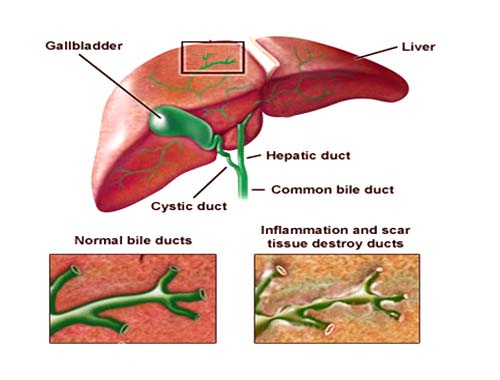Primary Sclerosing Cholangitis
Primary sclerosing cholangitis is a disease of the bile ducts in your liver. The term "cholangitis" in primary sclerosing cholangitis refers to inflammation of the bile ducts, while the term "sclerosing" describes the hardening and scarring of the bile ducts that result from chronic inflammation. Primary sclerosing cholangitis is a progressive disease that leads to liver damage and, eventually, liver failure. Liver transplant is the only known cure for primary sclerosing cholangitis, but transplant is typically reserved for people with severe liver damage. Researchers continue looking for treatments to slow or reverse bile duct damage caused by primary sclerosing cholangitis. But until a treatment is found, doctors care for people with primary sclerosing cholangitis by reducing signs and symptoms of complications. Cholestatic liver disease causing continued destruction of the bile ducts, cirrhosis, and end-stage liver disease. Predominantly affects young and middle-aged men, often with underlying inflammatory bowel disease. Patients may be asymptomatic at diagnosis but develop symptoms of pruritus and jaundice. Diagnosis involves laboratory tests and cholangiography. No effective medical therapy is available. Liver transplantation is the only treatment option for patients with advanced disease. Liver failure and cholangiocarcinoma are the leading causes of death in these patients.
